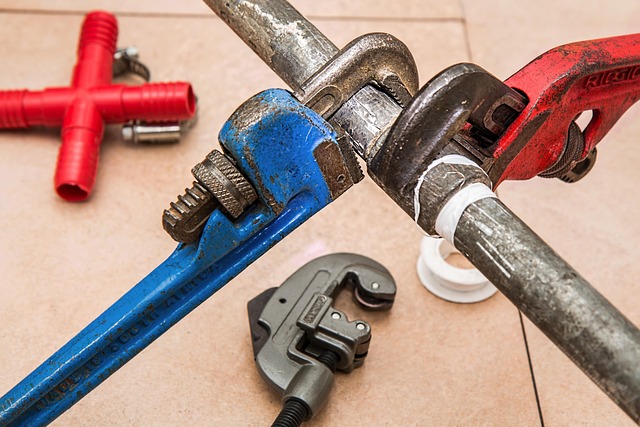Water heater leaks often go unnoticed until they cause flooding, making early detection crucial. Signs include persistent drips, wetness around the heater base, increased water bills, water pooling, floor stains, and mold/mildew. If any of these issues arise, contact emergency plumbing services immediately to prevent extensive damage, costly repairs, and safety hazards. Regularly inspect common problem areas like tank bottoms, pipe-valve connections, pressure relief valves, and gaskets for moisture or water damage.
Are you prepared for a potential flood caused by a leaking water heater? This comprehensive guide will equip you with essential knowledge and swift actions to tackle this common yet urgent issue. Learn to identify subtle signs of leaks, understand their urgency, and take immediate measures before it’s too late. We’ll navigate through DIY solutions and highlight when to confidently call in emergency plumbing services, ensuring your home remains dry and safe.
- Identify the Signs of a Leaking Water Heater
- – Recognizing the initial signs of a leak
- – Common locations of water heater leaks
Identify the Signs of a Leaking Water Heater

A leaking water heater can be a subtle issue, often going unnoticed until it escalates into a flooding catastrophe. It’s crucial to recognize the early signs to prevent extensive damage. One of the most evident indicators is a persistent drip or wetness around the base of the heater. This could be caused by faulty connections or a damaged valve, allowing water to slowly escape. Another sign to watch out for is an unusual increase in your water bills, which might suggest an inefficient heating system and potential leaks.
If you notice water pooling underneath or stains on the floor near your water heater, it’s a clear signal that there’s a problem. The presence of mold or mildew in adjacent areas is also a red flag, as these are often indicators of moisture intrusion. Prompt action is key; contact emergency plumbing services if you suspect any leak to avoid further complications and potential safety hazards.
– Recognizing the initial signs of a leak

Many homeowners often overlook the subtle signs of a water heater leak until it escalates into a full-blown flood. The initial indicators are usually silent, but with keen observation, you can catch them early. Keep an eye out for small puddles around the base of your water heater or damp spots on the floor beneath it. These could be telltale signs of a leaking valve or a damaged connection. Another red flag is a sudden increase in your water bills; an unexplained surge in usage might indicate a persistent leak.
If you suspect a leak, don’t delay; immediate action is crucial to prevent extensive damage. Contacting emergency plumbing services is a wise step as professionals can swiftly assess and fix the issue before it turns into a crisis. Quick intervention can save you from costly repairs and potential safety hazards associated with water damage.
– Common locations of water heater leaks

Water heater leaks can occur in various locations, often indicating underlying issues that require prompt attention to prevent significant damage. Common trouble spots include the bottom of the water heater tank, where sediment buildup and corrosion can cause leaks; the connections between pipes and valves; and the pressure relief valve, which is designed to release excess pressure but can fail or leak if not functioning correctly. In some cases, leaks might originate from damaged or worn-out gaskets and seals, especially around the temperature and pressure adjustment knobs.
Homeowners should be vigilant about checking these areas regularly for signs of moisture or water damage. If a leak is suspected, it’s crucial to act swiftly by contacting emergency plumbing services to avoid potential flooding. Prompt intervention can save you from costly repairs and prevent water damage to your home’s structure and belongings.
If you notice any signs of a leaking water heater, don’t delay; prompt action is crucial. Contacting emergency plumbing services can prevent what might seem like a minor issue from escalating into a major flood. By understanding the initial indicators and common leak locations, you can take proactive measures to protect your home and minimize potential damage. Don’t wait until it’s too late—address water heater leaks immediately to ensure peace of mind and avoid costly repairs.
